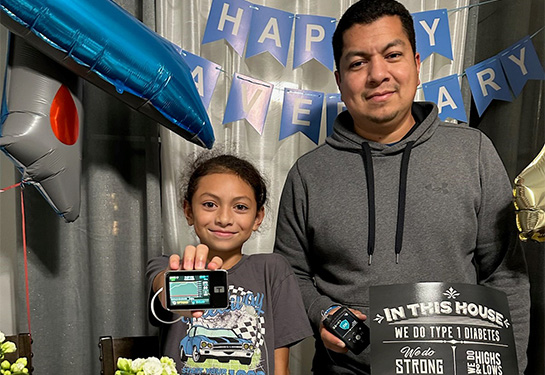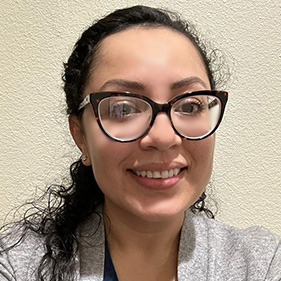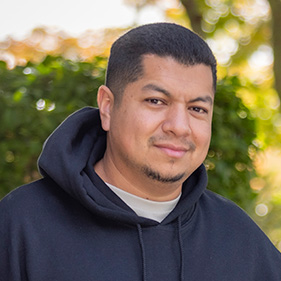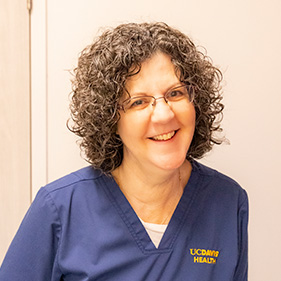Father, daughter treated for diabetes by same UC Davis team
It was December 2022 and Erik and Wendi Ramirez and their two daughters, Emma and Elena, were traveling from Corning to Chico to celebrate Emma’s 7th birthday. The family looked at Christmas lights and went to a trampoline park. It had been a fun day, but something just wasn’t right.
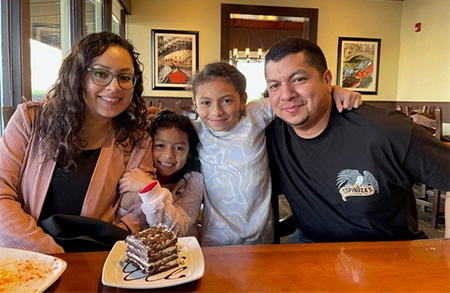
Their daughter, Elena, who was 9 at the time, needed frequent bathroom breaks. It was unlike her, and the past few days, Erik and Wendi had also noticed changes in Elena’s behavior. She was lethargic and had no interest in watching soccer, her favorite sport. Both were concerned.
A type 1 diabetic himself, Erik knew the signs, which often start suddenly.
“I told my wife we needed to check her blood sugar when we got home,” Erik said. “I didn’t want to believe that it could be diabetes, but I wanted to rule it out.”
Elena couldn’t even make the 30-minute trip without stopping. The family pulled over at Woodson Bridge State Recreation Area, a spot all too familiar to Erik, so Elena could use the restroom.

Erik had stopped at the same place when he was a 10-year-old kid. It was the same situation. He had not been feeling well. He had to use the restroom more often. Eventually, he couldn’t walk. It was on their way to the emergency room in Chico that his parents stopped at the bridge so he could use the restroom.
“Every time I cross that bridge, I think of that day,” Erik recalled. “I was so confused at the time and now, here I was with my own daughter in the same place.”
“Erik was losing his mind,” recounted Wendi. “We were both so nervous.”
When Erik went to the hospital 24 years earlier, he was life flighted to UC Davis Children’s Hospital. He worried Elena’s fate would be the same.
Erik was freaking out. I was checking myself to see if the meter was reading and it was working. We eventually got a reading for Elena and it was over 600.”—Wendi Ramirez, Elena’s mom
Off-the-chart blood sugar levels
The family arrived home and tested Elena’s blood sugar. The first meter wouldn’t read. They got another. Same result. They had meters all over the house since Erik had to test routinely. None gave a reading. Erik and Wendi were beside themselves.
“Erik was freaking out,” Wendi said. “I was checking myself to see if the meter was reading and it was working. We eventually got a reading for Elena and it was over 600.” The expected values for normal fasting blood glucose concentration are between 70 mg/dL and 100 mg/dL.
“I dropped to my knees,” Erik tearfully remembered. “It was the worst day of my life because I knew what was in store.”
Just like two decades prior, the Ramirez family got in the car and drove from Corning to the nearest hospital in Chico.
“My wife and I were both crying in the car. It’s been such a struggle for me over the years,” Erik said. “I didn’t want it to be true.”
I dropped to my knees. It was the worst day of my life because I knew what was in store.”—Erik Ramirez, Elena’s dad
When the family arrived at the emergency room, Elena’s blood sugar had dropped to 400+, still well above normal levels. The team there felt it was best for the family to go to UC Davis Children’s Hospital, where pediatric endocrinology specialists could provide treatment.
Like father, like daughter
It was as Erik and Wendi suspected. Elena had type 1 diabetes.
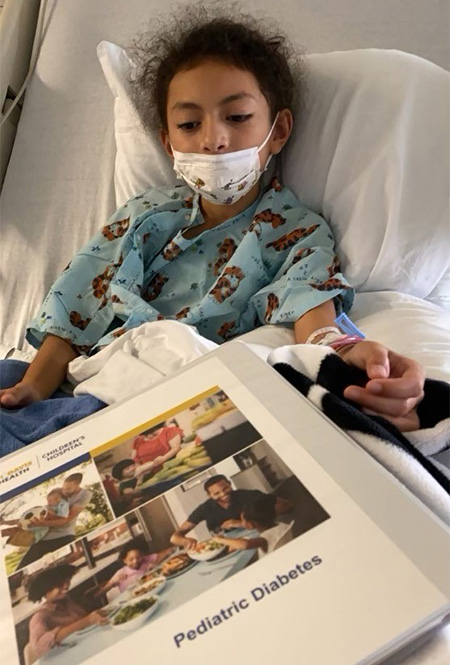
More than 37 million people in the United States have diabetes and type 1 diabetes accounts for about 5-10% of all diagnosed cases. Type 1 diabetes was once called insulin-dependent or juvenile diabetes, but it can develop at any age. A family health history of diabetes means children are more likely to develop the chronic disease.
The good news? Her parents had identified it quickly, so it had not progressed like Erik’s diabetes had.
Elena spent three days in the hospital, where she and her family learned about her condition.
“The staff was great at communicating with us, explaining everything,” Wendi said. “We thought it was cool there were [medical] residents involved in the treatment. The more the merrier.”
Although Elena had a lot of attention during her hospital stay, she still felt sad about her diagnosis, until she recognized that she had a “dia-buddy” who knew just what she was feeling.
“I had this [medical] bracelet on that had diabetes written on it. I said to my dad that I couldn’t believe it,” Elena said. “But since my dad has it, too, I felt I wasn’t alone.”
Not only does Elena have her dad to help her through her new diagnosis, she has the same care team helping to manage her diabetes.

“We went to the clinic and it looked the same. I specifically remember the fish tank,” Erik said. “It was really emotional. And then, we walked in and nurse Sultanna Iden asked me if I remembered her.”
“When I met Elena and Erik, I realized I had been Erik's diabetes nurse years ago,” said pediatric endocrinology nurse, Sultanna Iden. “I remember taking care of him with Dr. Styne and it was so great to see him as an adult raising a family of his own.”
“I never would have thought I’d share the same nurse and doctor with my daughter,” Erik marveled. “It made me sentimental.”
When I met Elena and Erik, I realized I had been Erik's diabetes nurse years ago. I remember taking care of him.” —Sultanna Iden, pediatric endocrinology nurse
“It was a bittersweet moment,” Wendi added. “It was really special for Erik.”
Brighter days ahead
Type 1 diabetes is not something the family welcomed, but it has created a special bond between father and daughter.
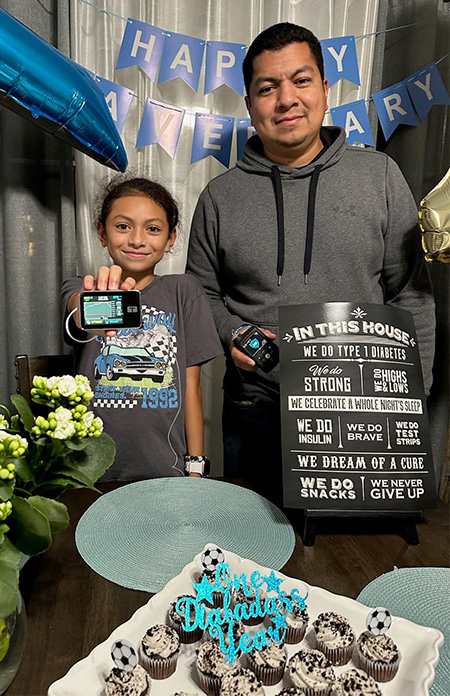
“When Elena was diagnosed she was quite sad,” remembers Iden. “At her last visit she was smiling and joking with dad, saying he was her rock. It was so nice to see daughter and dad being just daughter and dad, realizing that diabetes doesn't need to get in the way of their lives.”
“She’s really strong and I’m going to help her handle this,” Erik said of Elena, now 10. “She’s my dia-buddy and together, we’re going to make every day better and better.”
Wendi is grateful that UC Davis Children’s Hospital could help her daughter like they had helped her husband so many years before.
"Everyone has been so great,” Wendi said. “They really know how to take care of your child. Trust them.”


